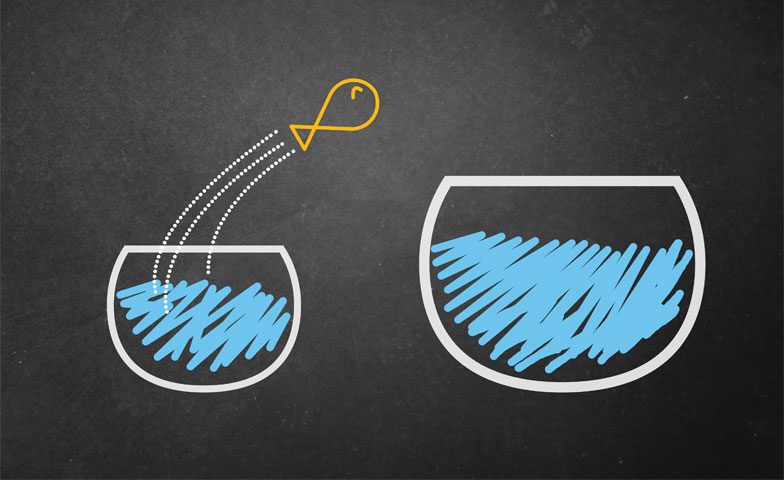Working with students to adjust to new environments and expectations.
Moving away from home to attend college was the first time a transition from one school to another was a remarkable, memorable event. While I can recall school transitions during childhood and young adolescent years, they took place with relative ease.
Although there were changes in environments—moving from one school building to another—my classmates remained the same. The transition from being in a self-contained classroom with 25 students all day to a rotating schedule of seven different classes in a larger building did not seem very overwhelming due to close peer relationships. It was not until I became a teacher that I developed a deep understanding of the effects that transitions—both positive and negative—have on many students as well as teachers.
A New Teacher in Unfamiliar Territory
My first year as a teacher in New York, where I was the “new teacher” on campus who did not know anyone, parallels the experiences of many of the students with whom we work. There were no familiar faces on campus, and I barely knew the school floor plan let alone how to get to school using public transportation!
It was a stressful time, and I was uncomfortable being in this new place. My defenses were up, and my demeanor sent the message: “Leave me alone; I don’t need your help.” But I did need companionship and a great deal of assistance, yet was too afraid to ask for support.
Fifteen years, five states, and one child later, I have met countless versions of myself as “the new kid on the block.” Many young adolescents enter new and much larger school buildings, encounter unfamiliar faces in classes, get lost on campus, and sometimes fall behind academically because they become so overwhelmed trying to manage different assignments from different teachers.
Even though I was an adult experiencing these feelings for the first time, I wish someone would have looked beyond my demeanor and asked me how I was adjusting to my new environment. It felt like I had to have it all together because I was an adult and I was a teacher.
These feelings of being unsettled or ill at ease are reflective of the transition process for many young adolescents as they progress into and out of middle level schools. As teachers, it is important for us to understand that different students face different challenges and fears during these transition periods.
Including Families
It is also important to communicate with family members and encourage adult involvement in students’ lives. As young adolescents develop, many seek independence while still needing companionship and adult guidance.
Every year for the past 15 years, I have conversations with most of my transitioning middle school parents, or parents of students new to the state of Hawaii, and they often take place during the middle of the first quarter. This is the period in the beginning of the school year when we discover those students who are having a difficult time adjusting to their new environment, schedule, and responsibilities. Many of these students are the ones who do not ask for help and seem unapproachable.
These conversations allow for parents to express concerns, ask questions, and discuss possible ways they can assist their children during this time. Such opportunities are important because many parents are unsure of how best to support their children. Investing the time and effort to build collaborative, trusting relationships with families is essential.
Supportive Actions
Transitions, whether to middle school or high school, should be more of a milestone and less of a traumatic experience. Schools should have transition programs with experiences that take place before and during the school year to provide students with support.
Some examples of support include:
- Summer Transition Day: Provide scheduled tours of the building for students and families to help familiarize them with the new environment.
- Lessons on organization: Most middle schools and high schools have either an advisory class or a study hall. During these times, students can learn strategies, have time to organize their supplies and binders, and learn how to write in (and use!) their organizers.
- Team building: These types of activities often help students get to know each other and continue to learn how to collaborate. Learning about oneself and others may likely help to build and nurture personal and group relationships.
Most young adolescents will need some type of support and guidance during these in-between periods. As teachers, we need to remain attentive to the subtle and obvious signals sent by young adolescents to help them develop the skills and dispositions needed during the many transitions that take place throughout our lives.
